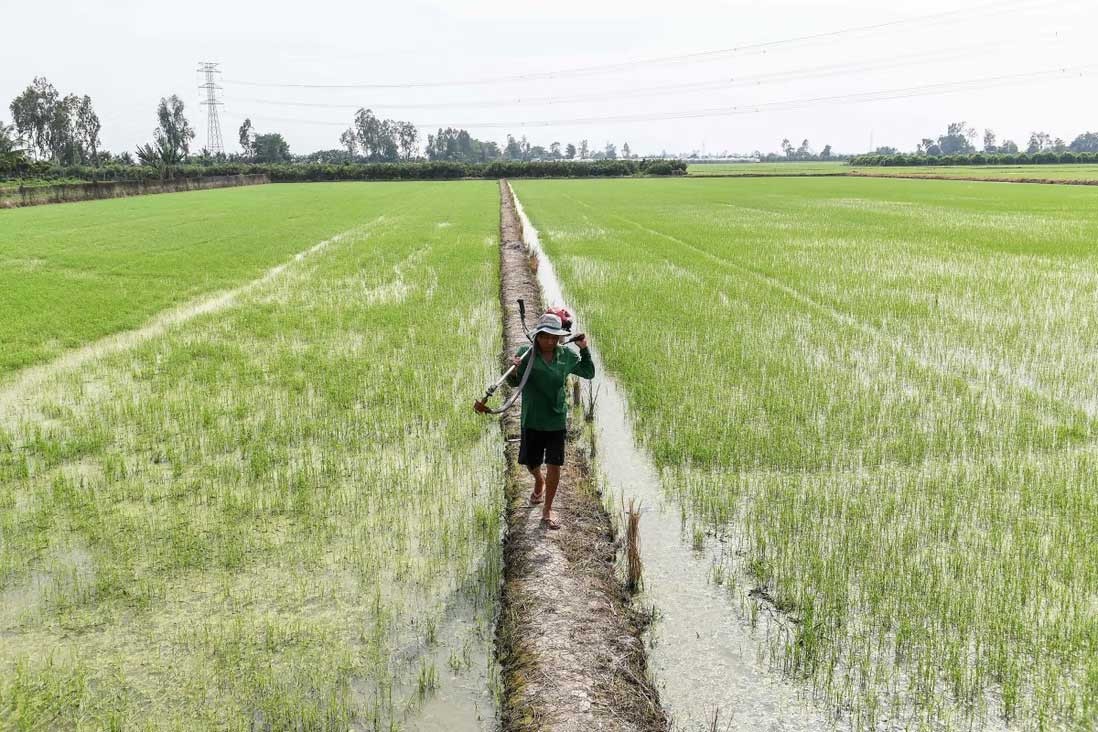From India to China, Asia’s ‘rice bowl’ is under threat due to groundwater woes
Major rice producers need to shift to producing rice that is resilient to flooding and salinity, to cope with likely increase in frequency, intensity of floods and droughts
Each degree of global warming adds about 7 per cent moisture to the water cycle, leading to more extreme weather events, analysts have warned
Biman Mukherji - Published: 4:00pm, 18 Mar, 2023
The world’s rice bowl could be in danger if more resilient farming practices are not adopted, experts have warned, as overexploitation of groundwater coupled with climate change has put age-old cultivation methods across Asia at risk.
Climate experts say the stress will be different across parts of the region even as floods and droughts are expected with greater frequency and intensity. That means bad news for India, Thailand and Vietnam – the top three rice exporters – and the rest of the world.
Mega deltas like Vietnam, Bangladesh and Myanmar – which are major rice producers – will face more saline water intrusion and flooding and hence will need to shift to producing rice that is resilient to flooding and salinity. More flooding is also expected on the Indo-Gangetic plains due to the increase in the glacier melting of the Himalayas.
“This isn’t the end of rice farming in Asia, but centuries-old cultivation practices have reached their limits,” said Tharman Shanmugaratnam, co-chair of the Global Commission on the Economics of Water, and Singapore’s senior minister and coordinating minister for social policies.
“Whole regions have been over-extracting groundwater, while others face growing saltwater intrusions,” he told This Week in Asia. “The good news is that solutions exist.”
Farmers in northern India use subsidised electricity to pump out water from ground for rice cultivation, which has caused water tables to plunge over years.
Tharman said farmers must be given incentives to adopt practices such as smart irrigation – which minimises water usage by scientifically measuring it – and producing flood-and drought-tolerant rice.
Growing less water-intensive crops could be another option, he added. “And from Shandong to Goa, scientists are doing promising experiments with salt-tolerant rice.”
Technical modelling shows that countries such as China and members of the Association of Southeast Asian Nations (Asean) will probably switch from being net food exporters to net food importers in 2050 due to water scarcity
A farmer walks along an embankment in a rice field in Can Tho in southern Vietnam in February 2023. Photo: AFP
Major rice producers need to shift to producing rice that is resilient to flooding and salinity, to cope with likely increase in frequency, intensity of floods and droughts
Each degree of global warming adds about 7 per cent moisture to the water cycle, leading to more extreme weather events, analysts have warned
Biman Mukherji - Published: 4:00pm, 18 Mar, 2023
The world’s rice bowl could be in danger if more resilient farming practices are not adopted, experts have warned, as overexploitation of groundwater coupled with climate change has put age-old cultivation methods across Asia at risk.
Climate experts say the stress will be different across parts of the region even as floods and droughts are expected with greater frequency and intensity. That means bad news for India, Thailand and Vietnam – the top three rice exporters – and the rest of the world.
Mega deltas like Vietnam, Bangladesh and Myanmar – which are major rice producers – will face more saline water intrusion and flooding and hence will need to shift to producing rice that is resilient to flooding and salinity. More flooding is also expected on the Indo-Gangetic plains due to the increase in the glacier melting of the Himalayas.
“This isn’t the end of rice farming in Asia, but centuries-old cultivation practices have reached their limits,” said Tharman Shanmugaratnam, co-chair of the Global Commission on the Economics of Water, and Singapore’s senior minister and coordinating minister for social policies.
“Whole regions have been over-extracting groundwater, while others face growing saltwater intrusions,” he told This Week in Asia. “The good news is that solutions exist.”
Farmers in northern India use subsidised electricity to pump out water from ground for rice cultivation, which has caused water tables to plunge over years.
Tharman said farmers must be given incentives to adopt practices such as smart irrigation – which minimises water usage by scientifically measuring it – and producing flood-and drought-tolerant rice.
Growing less water-intensive crops could be another option, he added. “And from Shandong to Goa, scientists are doing promising experiments with salt-tolerant rice.”
Technical modelling shows that countries such as China and members of the Association of Southeast Asian Nations (Asean) will probably switch from being net food exporters to net food importers in 2050 due to water scarcity
A farmer walks along an embankment in a rice field in Can Tho in southern Vietnam in February 2023. Photo: AFP
2 yr. ago


